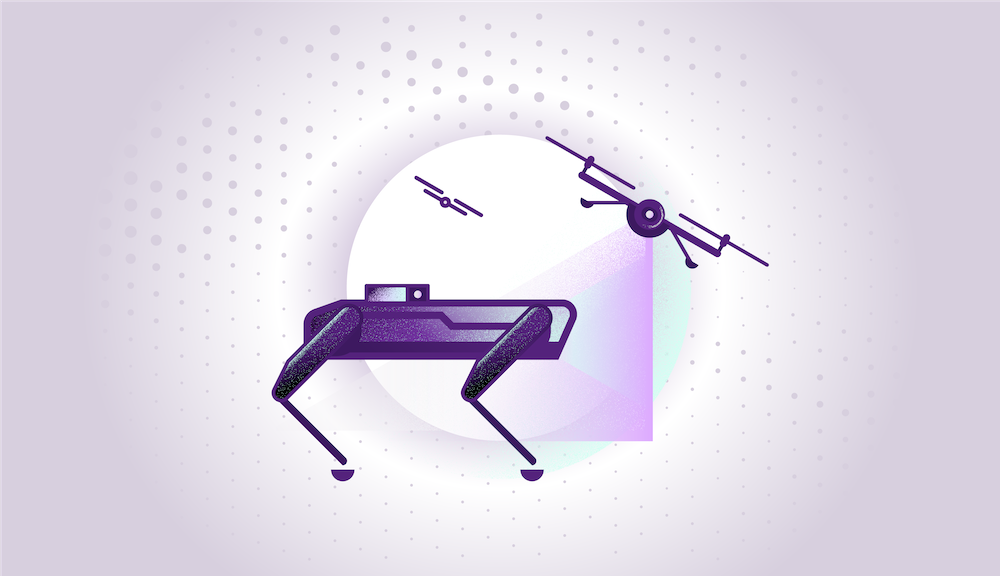Young researchers shape our future. Bringing their innovative ideas into our projects, they contribute not only to the excellence of research of the University of Luxembourg’s Interdisciplinary Centre for Security, Reliability and Trust (SnT), but also to our impact in society. They take our research to the next generation.
In this edition of the series, we feature Dr. Jose Luis Sanchez-Lopez and his research on situationally-aware robots.
Dr. Jose Luis Sanchez-Lopez, research scientist at the Automation & Robotics (ARG) research group, gave us some insights into the research projects he is working on, reflected on how their projects will shape the future, and shared his future plans with us.
Jose, what is the motivation for your research?
Off-the-shelf robots rely heavily on human intervention to perform repetitive tasks in controlled environments. The same applies if robots are remotely controlled to perform complex tasks in difficult environments. However, we are heading towards a future where humans and robots collaborate. Therefore, we need robots to operate autonomously.
Unlike artificial intelligence (AI) agents, robots live and work in the physical world, which is complex and changing. In industrial settings, the environment is adapted for robots, but we need robots that adapt to the world as it is. We, humans, acquire a deep understanding of the world around us. This is called situational awareness, and it is a primitive capability that we humans have developed after thousands of years of evolution. We continuously receive information from our sensors=senses, effortlessly processing it to construct a complex mental representation in our brain, integrating all the knowledge accumulated throughout our lives. This is very complex for robots and is one of the main reasons why we do not yet have robots around us.
What are you working on in your research?
At SnT, we are working to equip robots with deep situational understanding. We have introduced a new way for robots to represent the situation in the shape of a graph called situational graph (S-Graph). This graph is dynamically constructed in real-time using the measurements coming from the sensors of the robots.
The situation is encoded using multiple levels of abstraction, including shapes, the type of entities or objects and how entities connect, such as a room having four walls. Guided by our project and the needs of our partners, we made our robots situationally-aware in in-door man-made environments, relying on two different sensing technologies, LIDARs – measuring distances – and cameras.
What are the solutions in your projects?
Two of our partners operate in the construction sector: Stugalux employs LIDAR-equipped robots to autonomously monitor construction progress. In contrast, GAMMA Technologies utilises a camera-equipped handheld device to support construction workers through augmented reality. In both cases, our partners benefit from our S-Graphs, empowering their robots and hand-held devices with enhanced situational understanding, which leads to increased precision and autonomy. Our S-Graphs leverage the available construction plans and equipe them with capabilities akin to those of actual construction workers.
How does your approach shape the future?
Enhancing robots’ situational awareness is not just crucial for enabling precise and versatile operation in real-world environments, but it can also enhance their intelligence and efficiency. For example, our novel path planner for robots exploits the semantic-relational information encoded in our S-Graphs. This makes our robots more intelligent and efficient due to their increased situational awareness. Thanks to our S-Graph, we are now closer to robots that live and work with us.
What inspired you to work in research at SnT?
SnT is the perfect place to pursue your research goals. On the one hand, it is fuelled by the generous funding provided by Luxembourg and the ecosystem of a highly innovative dynamic economy in the heart of Europe, where several partners heavily invest in knowledge and research. On the other hand, SnT is a very energetic research centre of the University of Luxembourg that has been explosively growing since its creation and not only invests in talent attraction, but also tries to keep its internal resources to consolidate this growth.
What are your future plans?
My plan is to keep advancing robots’ situational awareness, enabling them to behave more intelligently and autonomously, which ensures their efficient integration into our daily lives and workplaces. Concretely, my goal is to continue to build strategic partnerships that enable me to expand my team and advance cutting-edge research. My aim is to produce impactful innovations that inspire future generations, have direct applications to societal well-being, protect the environment and contribute to economic prosperity. On a personal level, I hope to have the opportunity to gain even more independence and freedom to pursue my research ambitions.
About Jose:
Dr. Jose Luis Sanchez-Lopez received his Industrial Engineering degree (2010), M.Sc. in Automation and Robotics (2012), and Ph. D. in Robotics (2017) at the Technical University of Madrid (ES).He joined the ARG research group at SnT-UL in June 2017 as a Research Associate and was promoted to Research Scientist in January 2021. He was a visiting researcher at Inria-Rennes (FR) and H-BRS (DE) in 2023 and at the University of Zaragoza (ES) in 2024.

